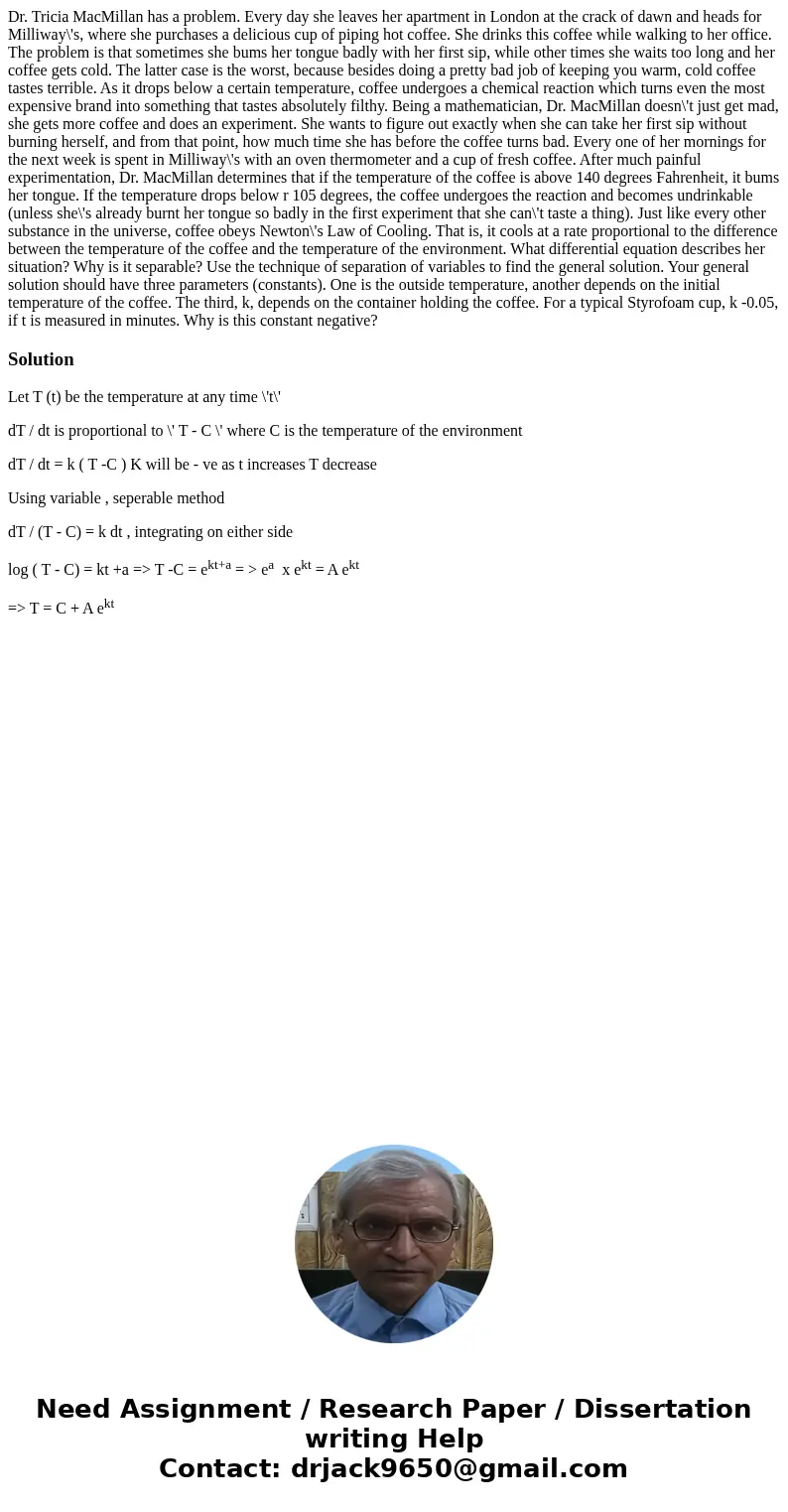Dr Tricia MacMillan has a problem Every day she leaves her a
Dr. Tricia MacMillan has a problem. Every day she leaves her apartment in London at the crack of dawn and heads for Milliway\'s, where she purchases a delicious cup of piping hot coffee. She drinks this coffee while walking to her office. The problem is that sometimes she bums her tongue badly with her first sip, while other times she waits too long and her coffee gets cold. The latter case is the worst, because besides doing a pretty bad job of keeping you warm, cold coffee tastes terrible. As it drops below a certain temperature, coffee undergoes a chemical reaction which turns even the most expensive brand into something that tastes absolutely filthy. Being a mathematician, Dr. MacMillan doesn\'t just get mad, she gets more coffee and does an experiment. She wants to figure out exactly when she can take her first sip without burning herself, and from that point, how much time she has before the coffee turns bad. Every one of her mornings for the next week is spent in Milliway\'s with an oven thermometer and a cup of fresh coffee. After much painful experimentation, Dr. MacMillan determines that if the temperature of the coffee is above 140 degrees Fahrenheit, it bums her tongue. If the temperature drops below r 105 degrees, the coffee undergoes the reaction and becomes undrinkable (unless she\'s already burnt her tongue so badly in the first experiment that she can\'t taste a thing). Just like every other substance in the universe, coffee obeys Newton\'s Law of Cooling. That is, it cools at a rate proportional to the difference between the temperature of the coffee and the temperature of the environment. What differential equation describes her situation? Why is it separable? Use the technique of separation of variables to find the general solution. Your general solution should have three parameters (constants). One is the outside temperature, another depends on the initial temperature of the coffee. The third, k, depends on the container holding the coffee. For a typical Styrofoam cup, k -0.05, if t is measured in minutes. Why is this constant negative?
Solution
Let T (t) be the temperature at any time \'t\'
dT / dt is proportional to \' T - C \' where C is the temperature of the environment
dT / dt = k ( T -C ) K will be - ve as t increases T decrease
Using variable , seperable method
dT / (T - C) = k dt , integrating on either side
log ( T - C) = kt +a => T -C = ekt+a = > ea x ekt = A ekt
=> T = C + A ekt

 Homework Sourse
Homework Sourse